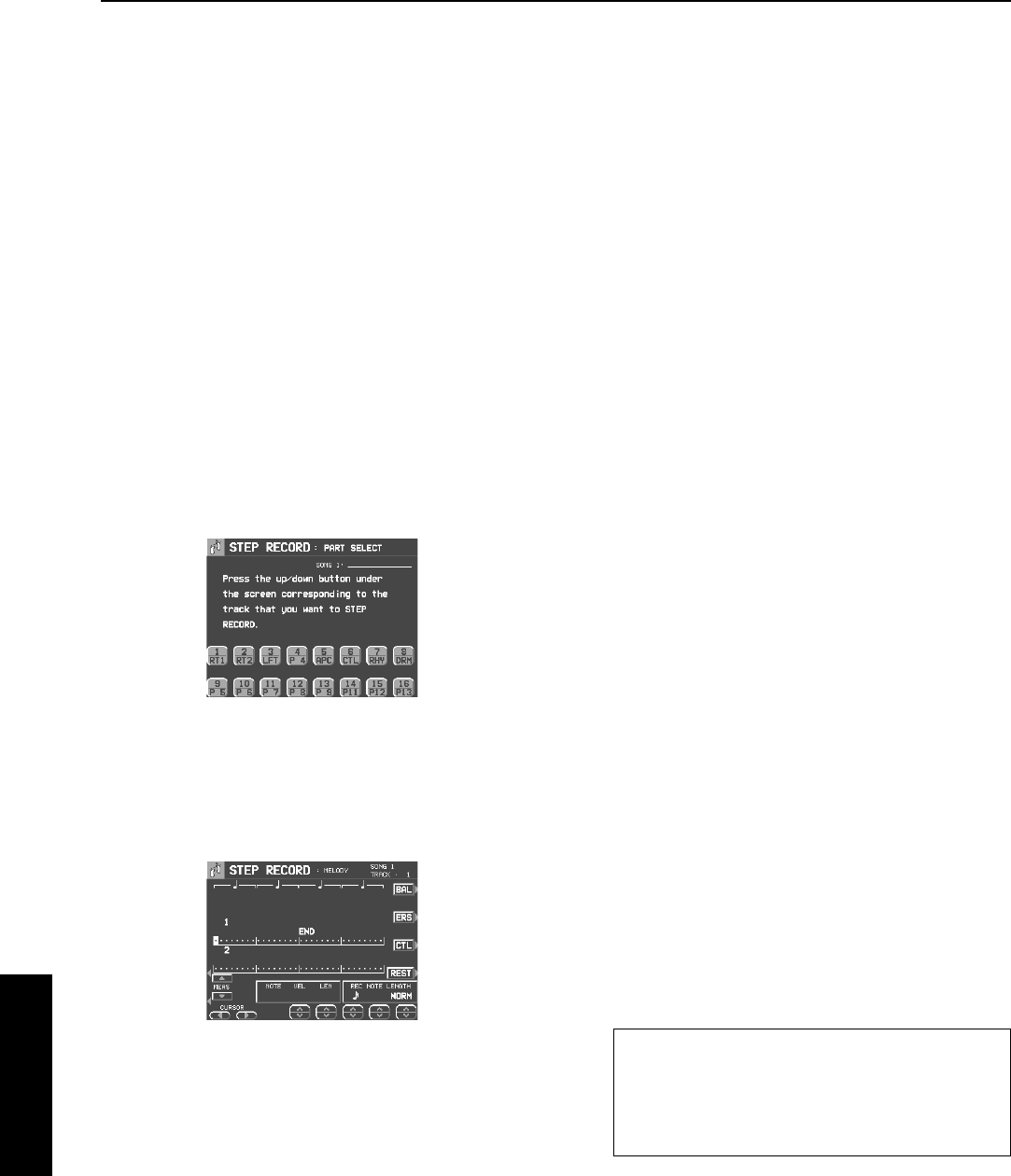
Part IV Sequencer
86
QQTG0692
Sequencer
Step Record
STEP RECORD is simply a method of making a tune by storing the sounds note-by-note on the display.
Instead of playing the keyboard directly as in the REALTIME RECORD mode, you can take your time to
input each single note. This is an especially effective method for storing complicated passages that are
difficult to play or when the exact timing of a part is critical.
Recording procedure
Record the keyboard performance and panel
changes.
1.
On the SEQ MENU display, use the SONG
SELECT
∧
and
∨
buttons to select the song
number. Then select RECORD & EDIT.
2.
On the RECORD & EDIT display, select STEP
RECORD.
• The display changes to the PART SELECT
display.
3.
Use the balance buttons below the display to
specify the track for the part you are going to
record (only one track can be selected at a
time).
• The display changes to the STEP RECORD
input display similar to the following.
• If you selected the track to which the CHORD
part has been assigned, the display changes
to the STEP RECORD: CHORD display.
(Refer to page 88.)
• If you selected the track to which the
RHYTHM part has been assigned, the display
changes to the STEP RECORD: RHYTHM
display. (Refer to page 90.)
• If you selected the track to which the CON-
TROL part has been assigned, the display
changes to the STEP RECORD: CONTROL
display.
4.
Use the MEAS
∧
and
∨
buttons to select the
measure.
• This step is not necessary if you are recording
from measure 1 of a blank track.
5.
Use the CURSOR
ᮤ
and
ᮣ
buttons to move
the cursor to the note position (dot) you are
going to store.
• Each dot represents one-eighth of a quarter-
note (a thirty-second note).
• When storing triplets, it may not be possible to
match the timing exactly with the 1/32-note
steps. However, if you select triplet-type notes
for the note length (LENGTH) in step 6 below,
the timing is automatically corrected.
6.
Use the left REC NOTE LENGTH
∧
and
∨
buttons to specify the note value. Select from
r
3
,
r
,
x
3
,
x
,
e
3
,
e
,
q
3
,
q
,
h
,
w
,
w
× 2 to 4. (A 3
denotes a triplet-type note.)
• For note values other than these, use the cen-
ter REC NOTE LENGTH buttons to specify
the note value to be added to that which you
specified with the left buttons.
Example: To record a dotted quarter-note
(
q
.
)
q
+
e
7.
Use the right REC NOTE LENGTH
∧
and
∨
buttons to specify the actual length of the
produced sound for the desired legato or
staccato effect.
8.
Specify the pitch and velocity of the note by
playing the keyboard.
• The dot on the display where the note is
stored changes to a
∗
mark.
• When recording chords, you can store multiple
notes at one position.
TENU (tenuto): Sound is produced for 95%
of the note length.
NORM (normal): 80%
STAC (staccato): 50%
CUTT (cutting): 25%
09_Part IV.fm 86 ページ 2003年2月5日 水曜日 午後1時34分


















